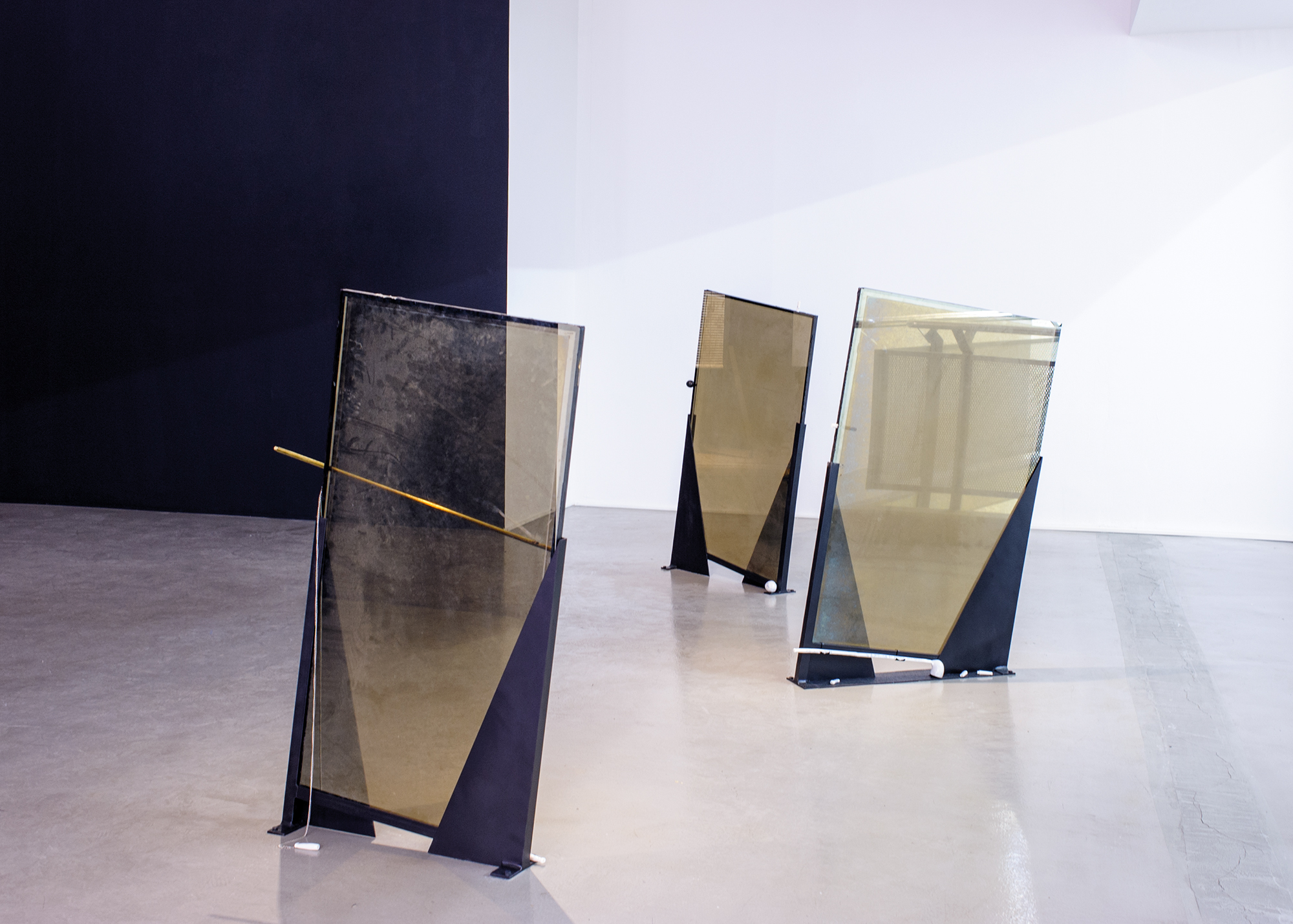GPS soundwalk
2022
website
Insel der Jugend
Treptower Park
Berlin, Germany
The water area nearby “die Insel der Jugend” in the eastern part of the Treptower Park will be the place where different but interconnected sonic archipelagos emerge. The focus of this work is on the complex notion of communication and common space (not only human-related) in a post- capitalist, gentrified city, as well as the various factors that influence it and its immediate environment.
The project W.E.T. by Los Otres is a series of In situ sonic exercises exploring amphibious practices and mimetic language within a listen-word-world-making.
The project W.E.T. by Los Otres is a series of In situ sonic exercises exploring amphibious practices and mimetic language within a listen-word-world-making.
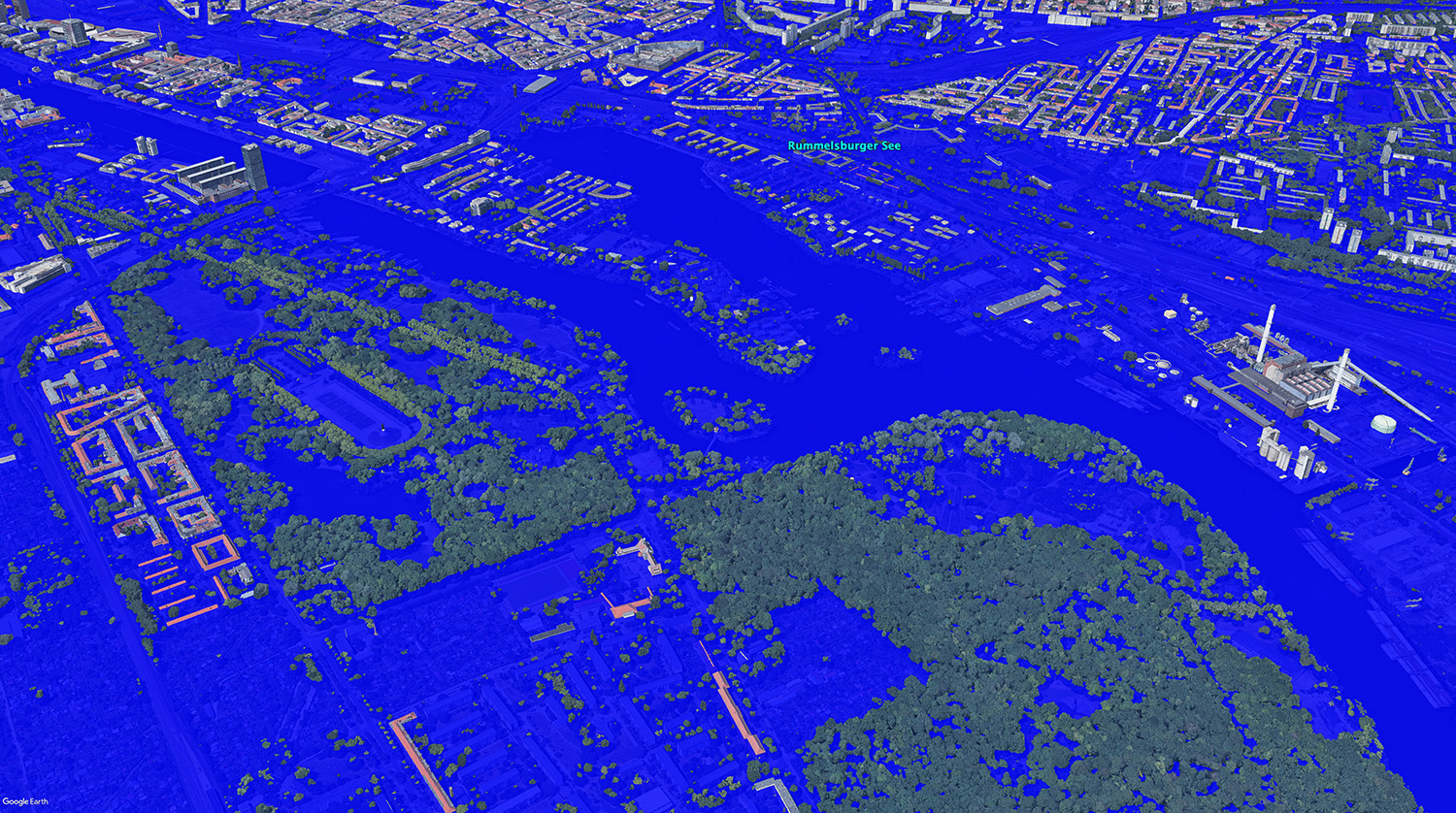
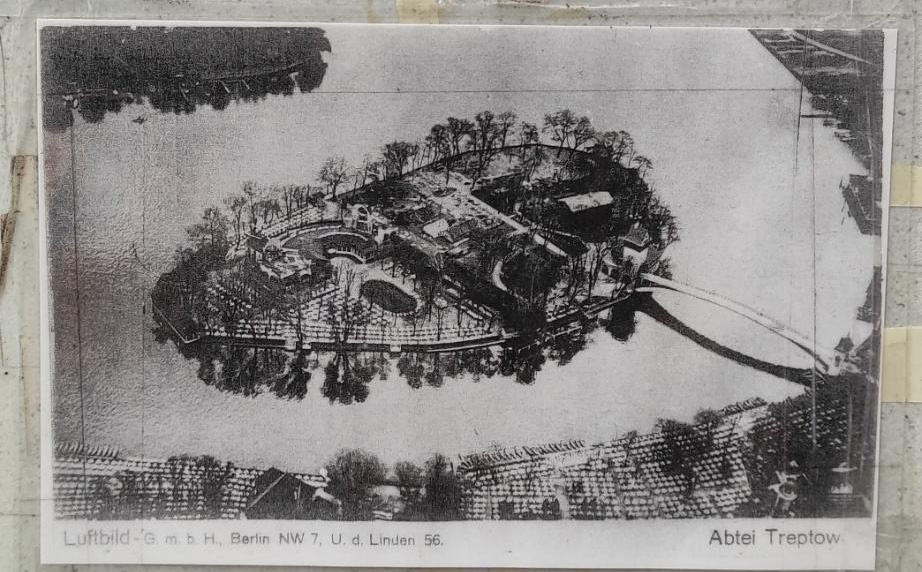
video essay
2022
website
Der Kleiner Wasserspeicher
Prenzlauer Berg
Berlin, Germany
Prenzlauer Berg water tower is the oldest water tower in Berlin went into operation in 1877 and supplied the surrounding neighborhood with water until 1952. In the tower were apartments for workers, which are still inhabited today. In 1933, the National Socialists converted Maschinenhaus I into a concentration camp. In the same year the function changed again and it served as a storage. The machine house II became a dormitory. Today a memorial wall commemorates this time.
The project 'tingling marbles' has been developed in reflection on the contradictional past of this water tower. 'tingling marbles' takes dreams as a starting point to dive into a self-learning process to explore the distinction between legible spatial information and subjective appropriation.
The project follows threads that have been repetitively running through dreams. These threads are emerging in marbles of daily surroundings, tangible things, scrabs, and debris; morphing into poetry with the intention to listen to dreams and detach ourselves from the current paradigm of reasoning.
The project 'tingling marbles' has been developed in reflection on the contradictional past of this water tower. 'tingling marbles' takes dreams as a starting point to dive into a self-learning process to explore the distinction between legible spatial information and subjective appropriation.
The project follows threads that have been repetitively running through dreams. These threads are emerging in marbles of daily surroundings, tangible things, scrabs, and debris; morphing into poetry with the intention to listen to dreams and detach ourselves from the current paradigm of reasoning.




research project
2022 - on going
website
zine
thealit Frauen.Kultur.Labor.
Arbeitszimmer thealit
Bremen, Germany
Two workshops and various individual meetings have been conducted at the beginning of February 2022 in the thealit Arbeitszimmer in Bremen.
Participants touched upon the questions about the museum’s displaying practices and intention behind several narratives within the exhibition context. After the Überseemuseum Bremen visit, discussions have taken place in small groups with a focus on detected narratives and combining with the question ‚What kind of choreographies happen between tangible things and our bodies?‘
All outcomes from the workshops and meetings are combining into the forthcoming video essay 'between tangible things and our bodies'.
Contributors: Aria Farajnezhad, Ana Patiño, I Chieh Tsai, Maria Arzt, Noëlle BuAbbud, and Paula Hurtado Otero.
Participants touched upon the questions about the museum’s displaying practices and intention behind several narratives within the exhibition context. After the Überseemuseum Bremen visit, discussions have taken place in small groups with a focus on detected narratives and combining with the question ‚What kind of choreographies happen between tangible things and our bodies?‘
All outcomes from the workshops and meetings are combining into the forthcoming video essay 'between tangible things and our bodies'.
Contributors: Aria Farajnezhad, Ana Patiño, I Chieh Tsai, Maria Arzt, Noëlle BuAbbud, and Paula Hurtado Otero.
event series
by Research and Waves
website
Changing Room
Wedding
Berlin, Germany
The project 'i can't hear you' happened between April and October 2021 in a framework of five public events at the project space Changing Room in Berlin.
The project proposes the re-evaluation and poetization of the toxified terminology of performance that the different parameters of modernity and postmodernity imposed as norms for current conditi- ons of labour and means of (cultural) production.
Workers in all contexts deal with varying conditions of inaudibility and inability, that are produced by hegemonic forms of oppression, such as ableism, racism, sexism, or other social inequalities. We can’t ‘unsee’/’unhear’ that. Performing within given notions of productivity, growth, capacity, or integration eventually makes it hard for individuals to equally participate in society. We ask ourselves: How can we give new meaning to these terms in a playful, unique and personal way?
In this project we would like to provoke the debunking of statements around what it means to “hear” each other, statements that are usually deemed obvious. Can and do we really hear each other? Do we want to hear each other?
Participants: Ralf Wendt, Anna Zawadzka, handverlesen with Lea Schneider and Kassandra Wedel, FemmeFitness, Ariel Orah and Bilawa Respati from Soydivision Kollektiv, Raluca Croitoru, Juliana Lindenhofer, and Brad Nath.
Kindly supported by the Stiftung Kunstfonds, NEUSTART KULTUR program.
The project proposes the re-evaluation and poetization of the toxified terminology of performance that the different parameters of modernity and postmodernity imposed as norms for current conditi- ons of labour and means of (cultural) production.
Workers in all contexts deal with varying conditions of inaudibility and inability, that are produced by hegemonic forms of oppression, such as ableism, racism, sexism, or other social inequalities. We can’t ‘unsee’/’unhear’ that. Performing within given notions of productivity, growth, capacity, or integration eventually makes it hard for individuals to equally participate in society. We ask ourselves: How can we give new meaning to these terms in a playful, unique and personal way?
In this project we would like to provoke the debunking of statements around what it means to “hear” each other, statements that are usually deemed obvious. Can and do we really hear each other? Do we want to hear each other?
Participants: Ralf Wendt, Anna Zawadzka, handverlesen with Lea Schneider and Kassandra Wedel, FemmeFitness, Ariel Orah and Bilawa Respati from Soydivision Kollektiv, Raluca Croitoru, Juliana Lindenhofer, and Brad Nath.
Kindly supported by the Stiftung Kunstfonds, NEUSTART KULTUR program.
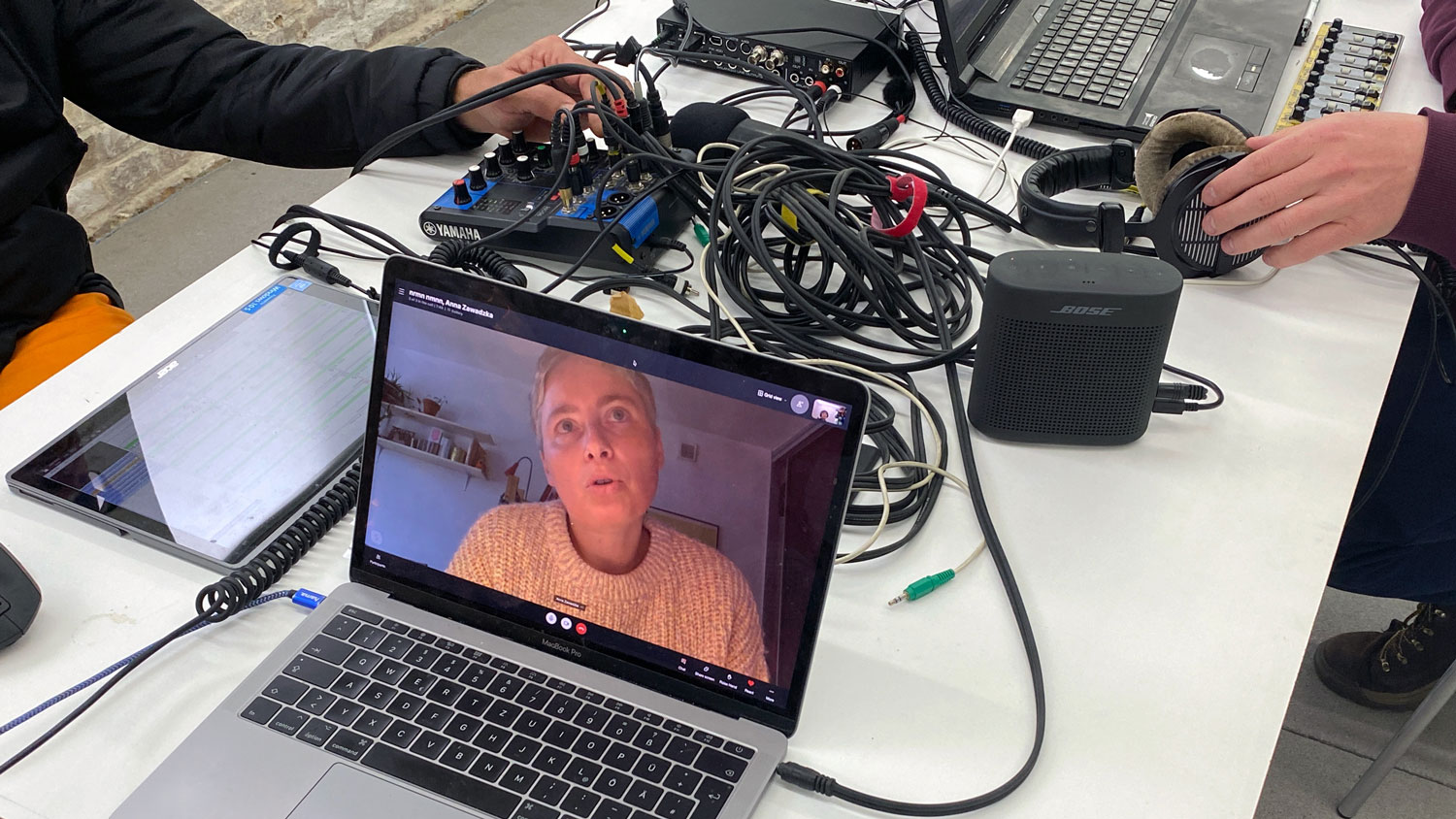

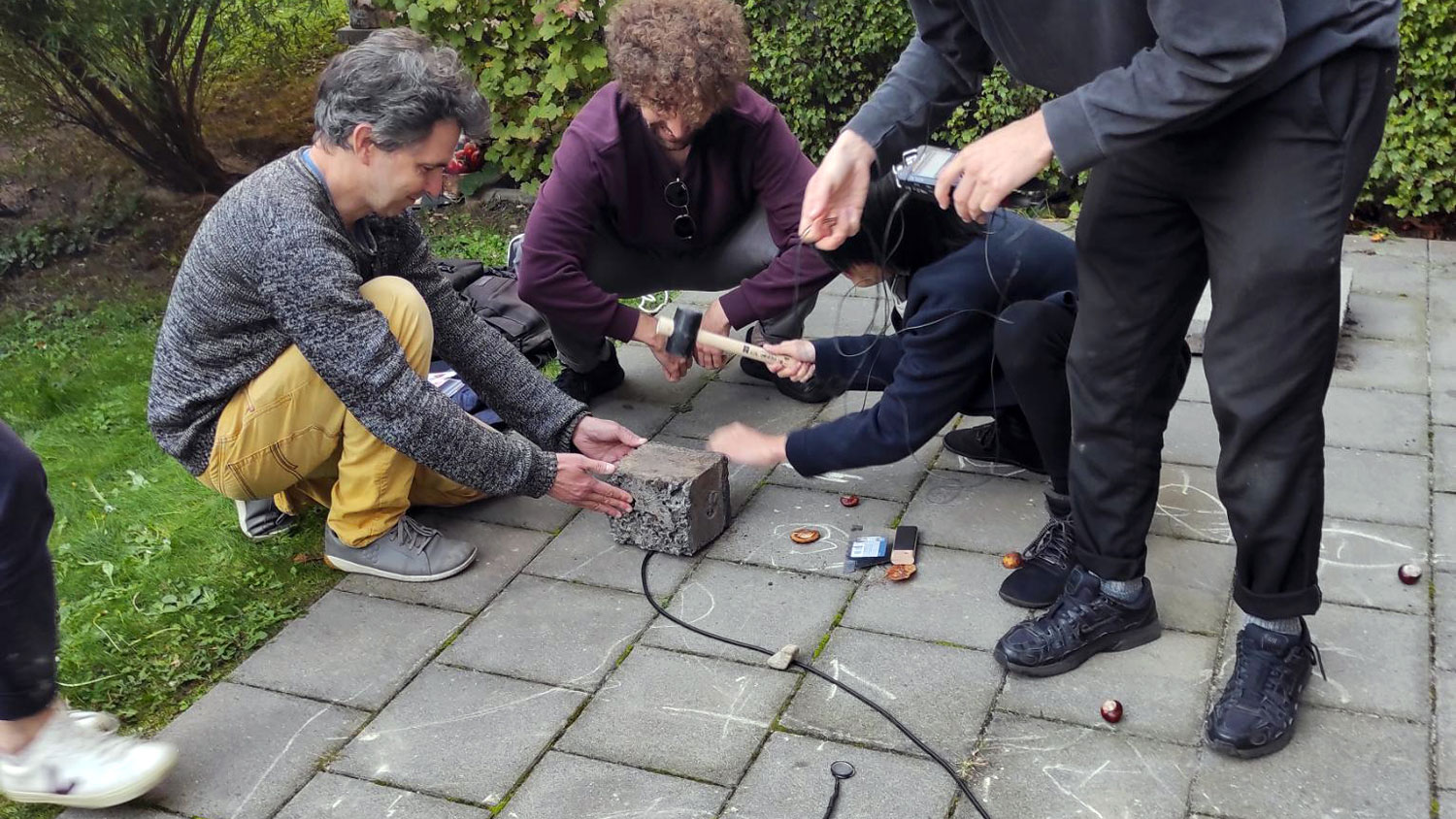
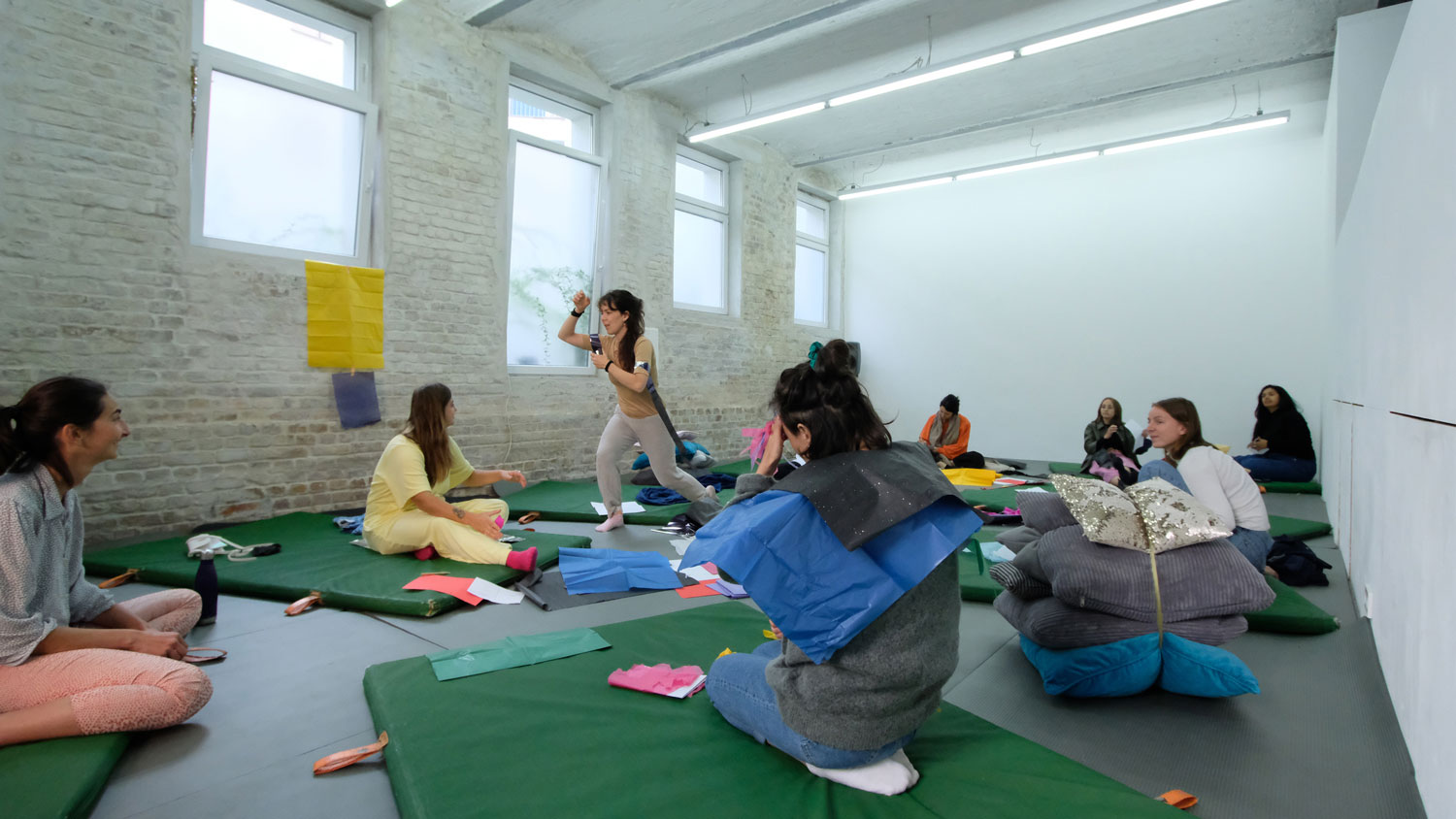
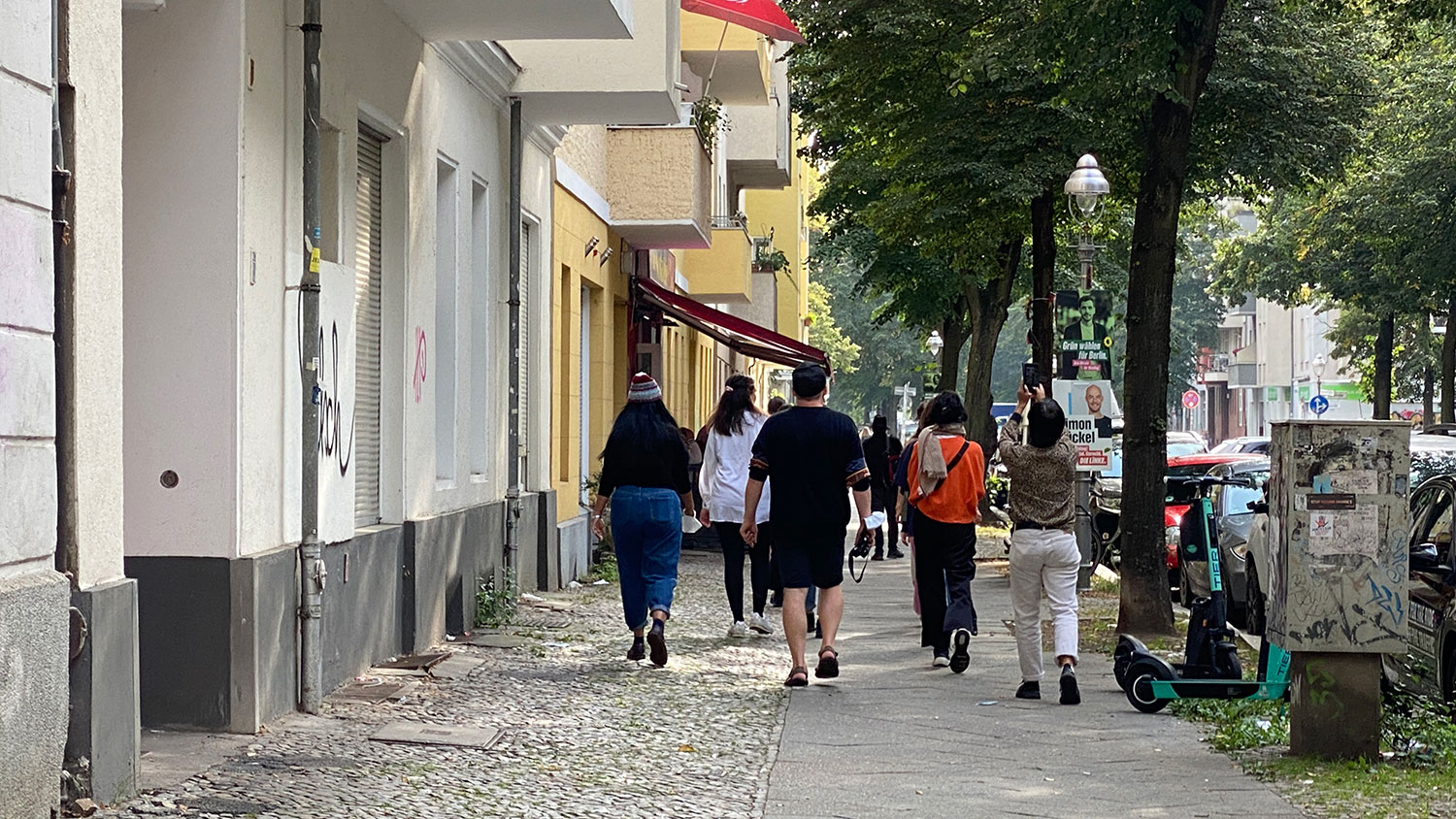

event series
by Research and Waves
website
various places
Bremen, Germany
This project is developed by meeting artists to ask questions, think together on what types of resources we need as artists nowadays. The final result of the meeting is meant to be multi-media FOLDER.
This project started for us from observing ourselves. We are making art from our bedrooms, on our phones, often unpaid and invisible to get to show the works of art in frameworks and institutions that give us opportunities, but also limit us. Some of us have studios and some others go back and forth to various spaces, looking for the definition of what a studio is and as well redefining our practice with different conditions we can work with.
In the form of day long meetings, for each session, the group assists the artists to set up a temporary studio and expose their thinking, playing, or just resting creative process. The aim of these meetings is to ask ourselves different questions related to producing art. Another important point to such a meeting is what we can learn from each other as artists without the structures that institutions are providing for us.
Participants: Stephan Thierbach and Felix Dreesen; Radio Angrezi; ZEFAK (Aria Farajnezhad, Elard Lukaczik und Zainab Haidary); Kate Chen and Frank Wang.
Kindly supported by Senator für Kultur der Freien Hansestadt Bremen.
This project started for us from observing ourselves. We are making art from our bedrooms, on our phones, often unpaid and invisible to get to show the works of art in frameworks and institutions that give us opportunities, but also limit us. Some of us have studios and some others go back and forth to various spaces, looking for the definition of what a studio is and as well redefining our practice with different conditions we can work with.
In the form of day long meetings, for each session, the group assists the artists to set up a temporary studio and expose their thinking, playing, or just resting creative process. The aim of these meetings is to ask ourselves different questions related to producing art. Another important point to such a meeting is what we can learn from each other as artists without the structures that institutions are providing for us.
Participants: Stephan Thierbach and Felix Dreesen; Radio Angrezi; ZEFAK (Aria Farajnezhad, Elard Lukaczik und Zainab Haidary); Kate Chen and Frank Wang.
Kindly supported by Senator für Kultur der Freien Hansestadt Bremen.

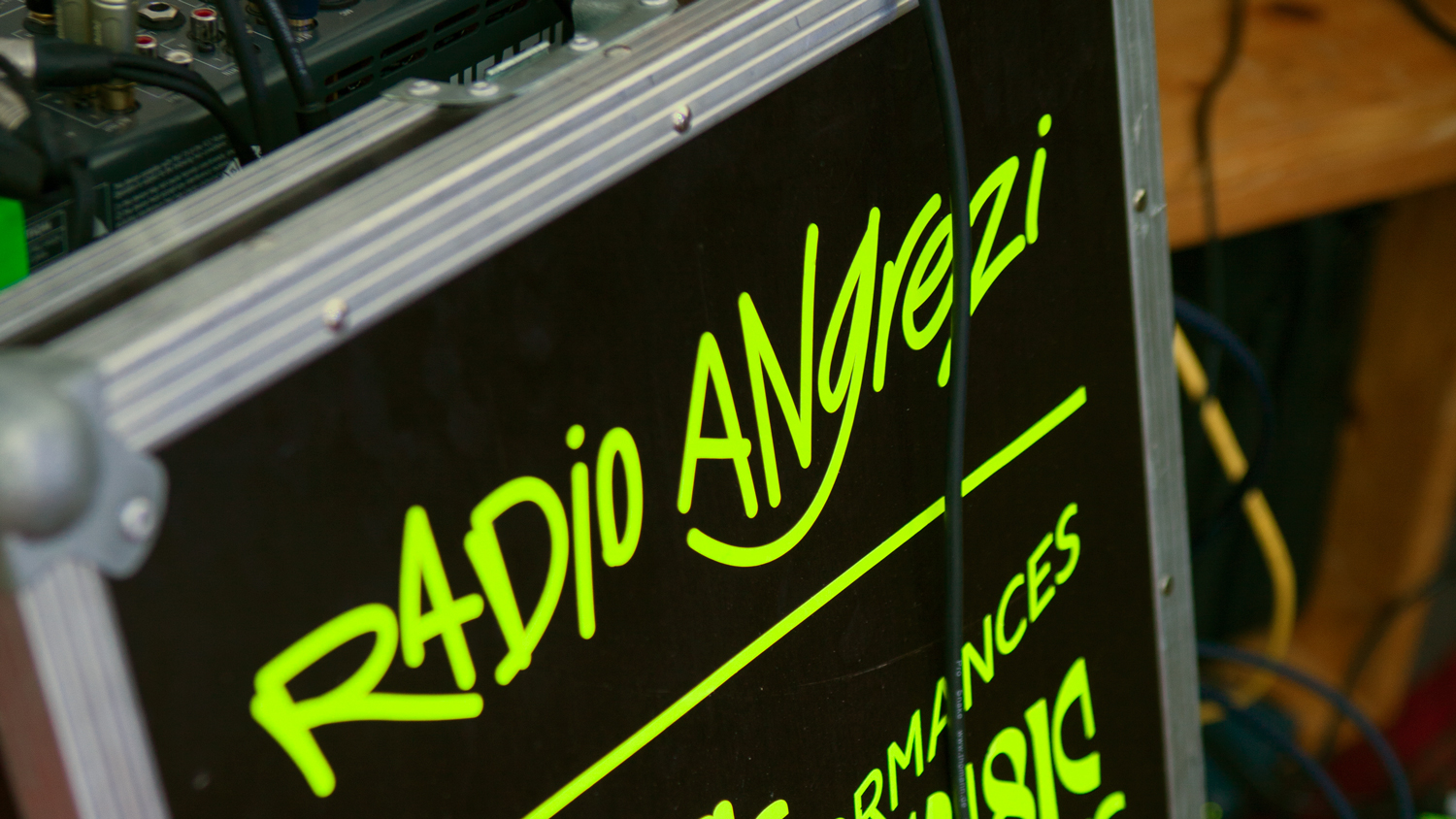

single-channel video
website
44. Bremer Förderpreis für Bildende Kunst
Städtische Galerie
Bremen, Germany
Maria Karpushina is represented in the exhibition by a two-part work. Here, she plays in areas at the edge or outside of the actual exhibition space - the glass door of the emergency exit to the dyke in the Large Gallery and the large, tripartite window directly beside the entrance to the Städtische Galerie - and thus expands this space and opens up the institution. In both situations, Maria Karpushina establishes a clear connection between inside and outside through her work, for which she uses a video projection whose openness is essentially created by projecting writing onto a narrow horizontal section of the window, the only area that does not allow a view through. This writing can also be read from the outside, which further reinforces the openness of the gallery. Formally, the artist takes up a procedure familiar from films, in which not only the spoken language is made legible via subtitles or, as in this case, supertitles, but also all the relevant background noises and background music.
The fact that this creates an inevitable discrepancy between legible information and subjective appropriation as an auditory impression is a starting point of her interest, which Maria Karpushina uses to employ writing as a means of sensual imagination and reflection on content. In addition to a sonic interpretation, a visual idea, occasionally perhaps even an olfactory level, inevitably emerges when certain supertitles appear on the window panes.
It becomes clear that the artist on the whole relies on rather general descriptions and associations, and that a slight distinction can be discerned in the two places: while in the entrance window, actions are described with mostly single verbs, in the door to the dyke, situations seem to be found which also remain mostly unspecific. Nevertheless, it seems as if there is an assignment to the different characters of the passageway in front of the gallery and the dike‘s recreational area behind it. The top titles are created in a found footage process, a well-known form of video art. They refer at the window beside the entrance to very early examples from the early days of film and at the glass door to documentaries on ocean liners from Bremen. In each case films without language, visualized by means of memorable short descriptions of the film content.
The artist reflects generally about who tells which story from which perspective and, above all, which images emerge when this story is again taken out of its context. Thus, due to the reference to place, the typesetting develops a part of its visual interpretation by subsuming the view into the spaces and everything and everyone in it.
Text by Ingmar Lähnemann
The fact that this creates an inevitable discrepancy between legible information and subjective appropriation as an auditory impression is a starting point of her interest, which Maria Karpushina uses to employ writing as a means of sensual imagination and reflection on content. In addition to a sonic interpretation, a visual idea, occasionally perhaps even an olfactory level, inevitably emerges when certain supertitles appear on the window panes.
It becomes clear that the artist on the whole relies on rather general descriptions and associations, and that a slight distinction can be discerned in the two places: while in the entrance window, actions are described with mostly single verbs, in the door to the dyke, situations seem to be found which also remain mostly unspecific. Nevertheless, it seems as if there is an assignment to the different characters of the passageway in front of the gallery and the dike‘s recreational area behind it. The top titles are created in a found footage process, a well-known form of video art. They refer at the window beside the entrance to very early examples from the early days of film and at the glass door to documentaries on ocean liners from Bremen. In each case films without language, visualized by means of memorable short descriptions of the film content.
The artist reflects generally about who tells which story from which perspective and, above all, which images emerge when this story is again taken out of its context. Thus, due to the reference to place, the typesetting develops a part of its visual interpretation by subsuming the view into the spaces and everything and everyone in it.
Text by Ingmar Lähnemann

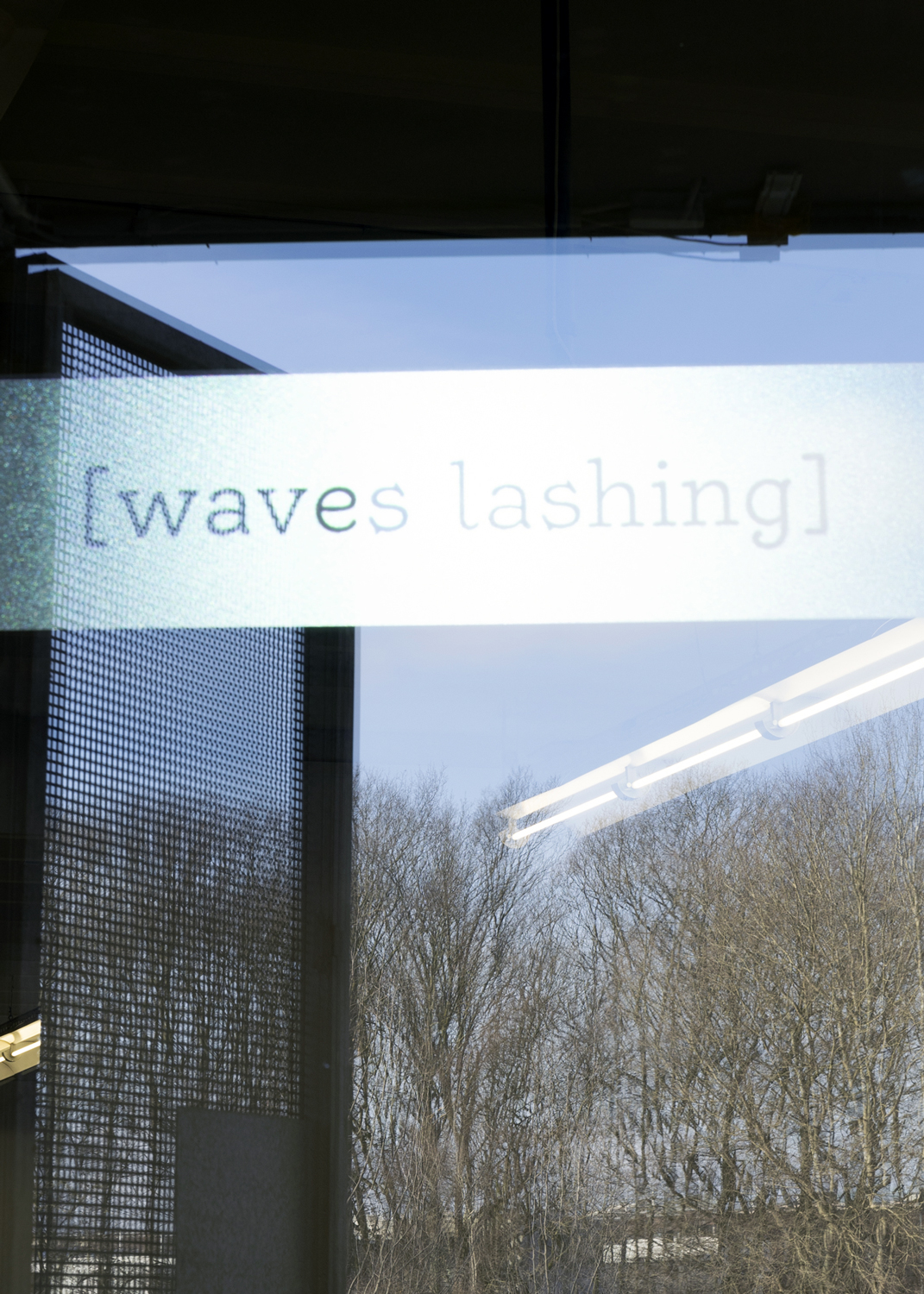

In Meisterschüler project she deals with the power relations between different regimes of knowledge. With this comprehensive thematic context in mind, the artist creates an installation of modified objects which have been removed from institutional contexts for forming and distributing knowledge, weaving them into a network of meaningful references.
The central objects are three windows left over from the renovation of the building housing Bremen’s Überseemuseum in the year 2018. On the one hand, Karpushina regards these windows as placeholders for museums of natural history or ethnography in general and thus for epistemological claims, which she interprets as a “delegitimization of various types of non-western knowledge”. On the other hand, she uses the functional aspects of the windows, such as their transparency and qualities of revealing and of showing, to intensify the field of her exploration. The artist modified the windows by integrating elements of different pipes, such as smoking pipes or whistles, which make reference to the museum’s collection and their link to trade and seafaring, at certain points in the window frames. The windows therefore potentially offer to be played through the whistles within.
The artist thus references the term “whistleblowing”, and with it the thought of whistling, as a critical act: “Whistling as a non-violent method to uncover hegemonic traces within epistemological traditions”, Karpushina states. In the ambivalent moment between implicit references and conceptual associations on the one hand and acting and working through whistling on the other hand, the artist develops the socially critical potential of her work.
Text by Alejandro Perdomo Daniels; Translated from German by Kate Andrews
*special thanks to Noëlle BuAbbud, Kate Chen, Paula Hurtado Otero and Meral Meraki.
The central objects are three windows left over from the renovation of the building housing Bremen’s Überseemuseum in the year 2018. On the one hand, Karpushina regards these windows as placeholders for museums of natural history or ethnography in general and thus for epistemological claims, which she interprets as a “delegitimization of various types of non-western knowledge”. On the other hand, she uses the functional aspects of the windows, such as their transparency and qualities of revealing and of showing, to intensify the field of her exploration. The artist modified the windows by integrating elements of different pipes, such as smoking pipes or whistles, which make reference to the museum’s collection and their link to trade and seafaring, at certain points in the window frames. The windows therefore potentially offer to be played through the whistles within.
The artist thus references the term “whistleblowing”, and with it the thought of whistling, as a critical act: “Whistling as a non-violent method to uncover hegemonic traces within epistemological traditions”, Karpushina states. In the ambivalent moment between implicit references and conceptual associations on the one hand and acting and working through whistling on the other hand, the artist develops the socially critical potential of her work.
Text by Alejandro Perdomo Daniels; Translated from German by Kate Andrews
*special thanks to Noëlle BuAbbud, Kate Chen, Paula Hurtado Otero and Meral Meraki.
